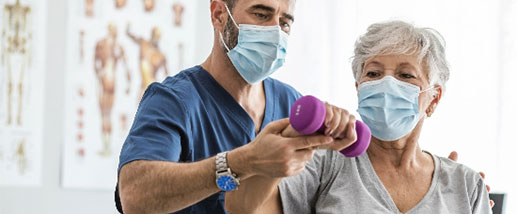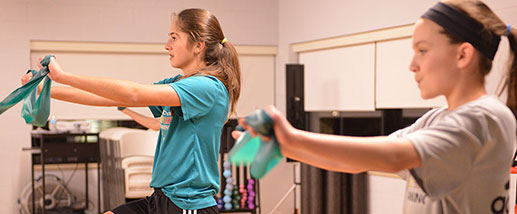Understanding Signs, Symptoms and Risk Factors
October is Breast Cancer Awareness Month and a great time to
spread the word about the importance of breast health all year long. Breast
cancer is one of the most common forms of cancer diagnosed in the United
States, typically in women, but it occurs in men as well. In 2020 alone, an
estimated 276,000 women will be diagnosed with breast cancer. Most of these new
cases will occur in women older than 50, but 10% will occur in women younger
than 45. Recognizing the warning signs of breast cancer and early detection
will mean more treatment options and a better chance of being cured.
Be aware of changes in your breasts
-
Lump
in the breast or underarm -
Bloody
discharge from the nipple -
Indentation
or retraction of the nipple area -
Change
in breast size -
Rippling
(flattening or indentation) of the skin covering the breast -
Crustiness
or rash of the nipple or areola
What to you do if you notice a new symptom
-
Make
an appointment with a breast surgeon for an evaluation -
IHA
offers breast surgery in several locations. Learn more and schedule an
appointment by visiting: https://ihacares.com/specialties/breast-surgery
Stay up-to-date with breast screenings
Regular screening for breast cancer is done before there are any
signs or symptoms and is the best way to find cancer early when it’s easier to
treat. The first step(s) of screening for breast cancer typically include
mammogram and/or a patient’s awareness of changes in their breast.
- Self-Awareness: Conduct regular and frequent self-exams of your breasts. Become familiar with your breasts, so you aware of, and able to, recognize changes right away.
- Clinical Breast Exam: This exam is done in a clinical setting, by a physician who will use their hands to look for lumps or changes in your breasts.
- Mammogram: An x-ray of the breast and the best way to detect cancer early. A screening mammogram is done for asymptomatic women, a diagnostic mammogram is done for women with a new symptom or mammographic abnormality.
A mammogram found something suspicious, now what?
If your doctor finds something concerning on your mammogram, the
first step would be diagnostic imaging to further characterize the area. This may include: diagnostic mammogram,
ultrasound, MRI.
-
Biopsy:
a small sample of cells or tissue is removed and reviewed under a microscope to
determine if cancer is present. There are a variety of ways to perform a
biopsy. Talk to your physician about the options available to you, if you
require a biopsy. -
Diagnostic
Mammogram: an X-ray test used to diagnose unusual breast
changes, such as a lump, pain, nipple discharge, change in breast size or shape
or previous breast cancer. If your screening mammogram does show an
abnormality, you may need additional imaging like a diagnostic mammogram. -
Breast Ultrasound: Using sound waves to
produce images of the internal structures of the breast, the breast ultrasound
can help a physician determine if a mass an abnormality is more likely a solid
mass or fluid-filled cyst. -
MRI:
The MRI uses magnets and radio waves to produce images of the breast. These
images provide more information and details than other tests. Your physician
may recommend a breast MRI for you if your biopsy results were positive for
cancer or if you’re considered high risk for breast cancer. The breast MRI is
intended to be used along with a mammogram, not as a replacement.
Who would be considered high risk for breast cancer?
As a person ages, their risk of being diagnosed with breast
cancer increases, but there are a few other risk factors that you cannot
change:
-
Age:
Most breast cancers are diagnosed after age 50. -
Genetics:
Inherited changes (mutations) to certain genes, such as BRCA1 and BRCA2. Women
who have inherited these genetic changes are at higher risk of breast
and ovarian cancer. -
Dense Breasts: Dense
breasts have more connective tissue than fatty tissue, which can sometimes make
it hard to see tumors on a mammogram. Women with dense breasts are more likely
to get breast cancer. -
Personal History
of Breast Cancer: Women who have had breast cancer are
more likely to get breast cancer a second time. Some non-cancerous breast
diseases such as atypical hyperplasia or lobular carcinoma in situ are
associated with a higher risk of getting breast cancer. -
Family History of Breast Cancer: A woman’s risk for breast cancer is higher if
she has a mother, sister, or daughter (first-degree relative) or multiple
family members on either her mother’s or father’s side of
the family who have had breast or ovarian cancer. Having a first-degree male
relative with breast cancer also raises a woman’s risk.
Understanding the signs and symptoms of breast cancer and your risk factors is important for every woman and man. If you have questions or concerns about your breast health, schedule an appointment with an IHA Breast Surgeon.





